Other HTML Editors to Use Aside From Frontpage
Web developers used to automatically turn to Frontpage when they needed an HTML editor but this has changed since when Frontpage was discontinued after the release of Frontpage 2003. What are the other options now? First and foremost, the following HTML editors are classified as: “WHAT YOU SEE IS WHAT YOU GET” or WYSIWYG. They are easy to use for those who are not familiar with editing raw HTML code. With these editors, you can see what the codes would look like on a webpage instantaneously – you don’t even need to save your work and upload it to do so.
Webpage Design Tools
Microsoft FrontPage
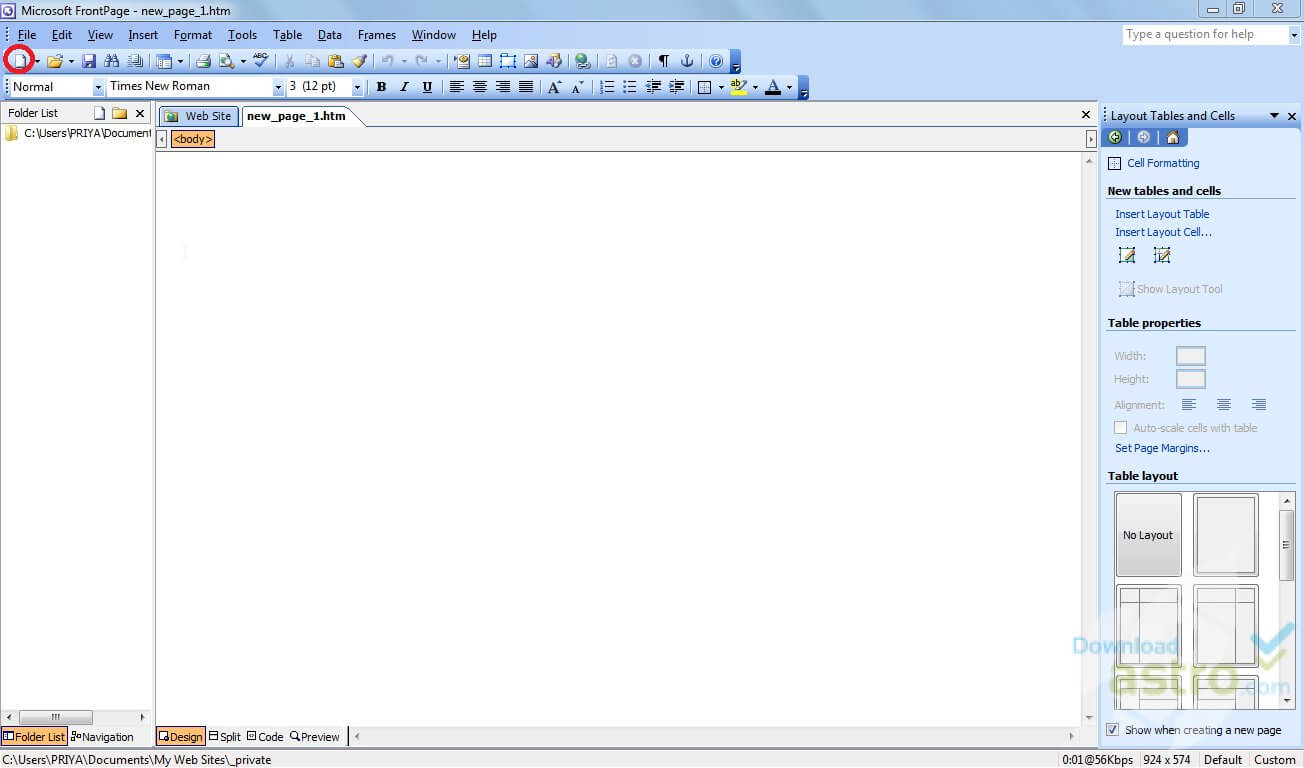
OS: Windows
Microsoft FrontPage was among the original HTML editors. It came with the Microsoft Office package until it was stopped.
Value: N/A
Pros:
- User-friendly
- HTML background not required
- You can build Access and SQL databases using the program
Cons:
- As a Microsoft product, it only supports Windows so it is an issue for users of Linux or Mac.
Conclusion:
It no longer exists unless eBay still sells this tool. Additionally, since it has been discontinued, Technical Support has not been available since January 2011 – this means you will have to rely on online message boards and forums if you encounter any problems.
Microsoft Expression Web
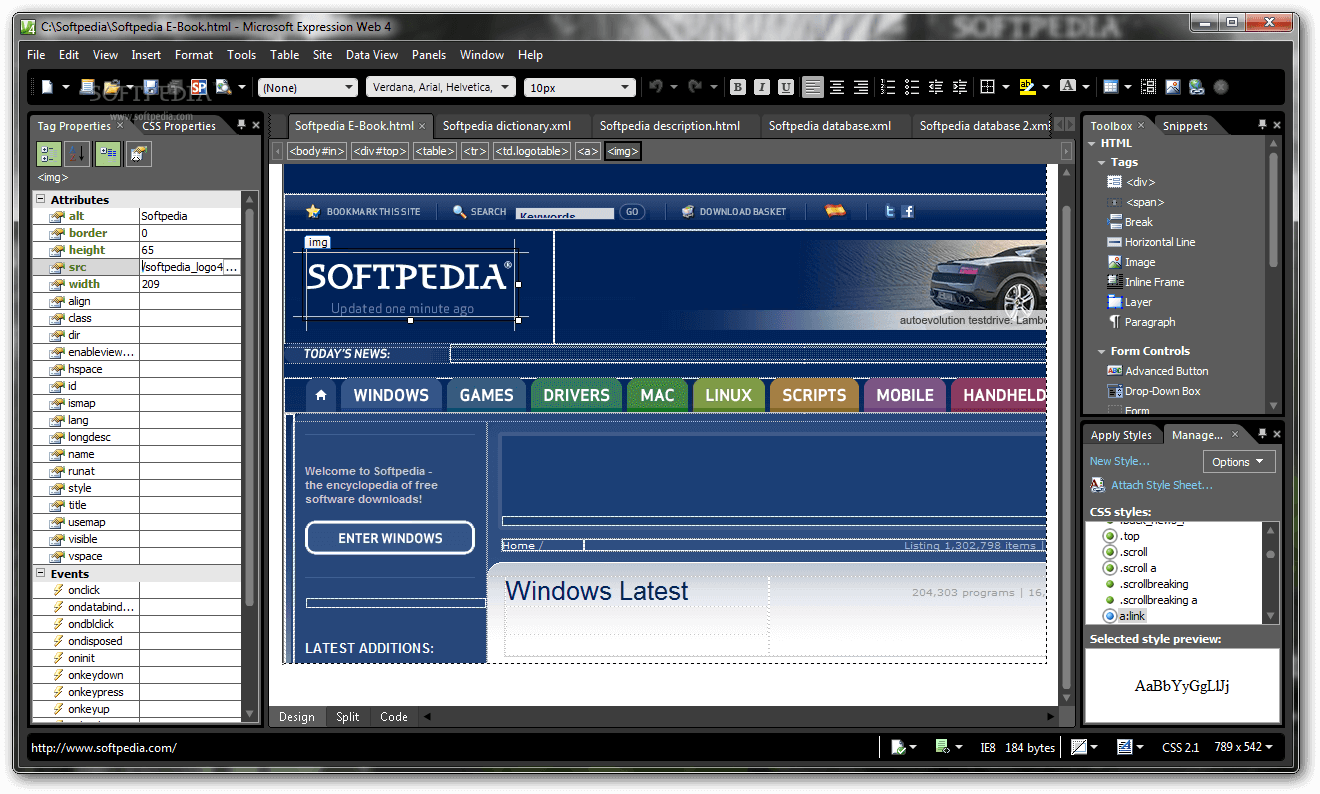
OS: Windows
Value: It used to be available for a price but became a free download in 2013.
It was known as FrontPage 2 with a different interface and extra features. The software MS Expression Web 4 took its place as a free download from the Microsoft website.
Pros:
- Free download
- Supports Silverlight
Cons:
- Fewer features and templates compared to programs like Dreamweaver
- The Superpreview mode does not function anymore so web developers can no longer check for browser compatibility
- Compatibility problems with FrontPage file and server extensions
- Does not support Linux and Mac
- Has been discontinued
Conclusion:
It’s not recommended to use this product since it has been discontinued by Microsoft. The company will not be able to help you resolve any problems you may encounter, including transferring your files or templates to another HTML editor.
There is also an issue with transferring your FrontPage files to Expression Web because of file extension changes. You can find more information on compatibility issues on the Microsoft website.
Adobe Dreamweaver CS6
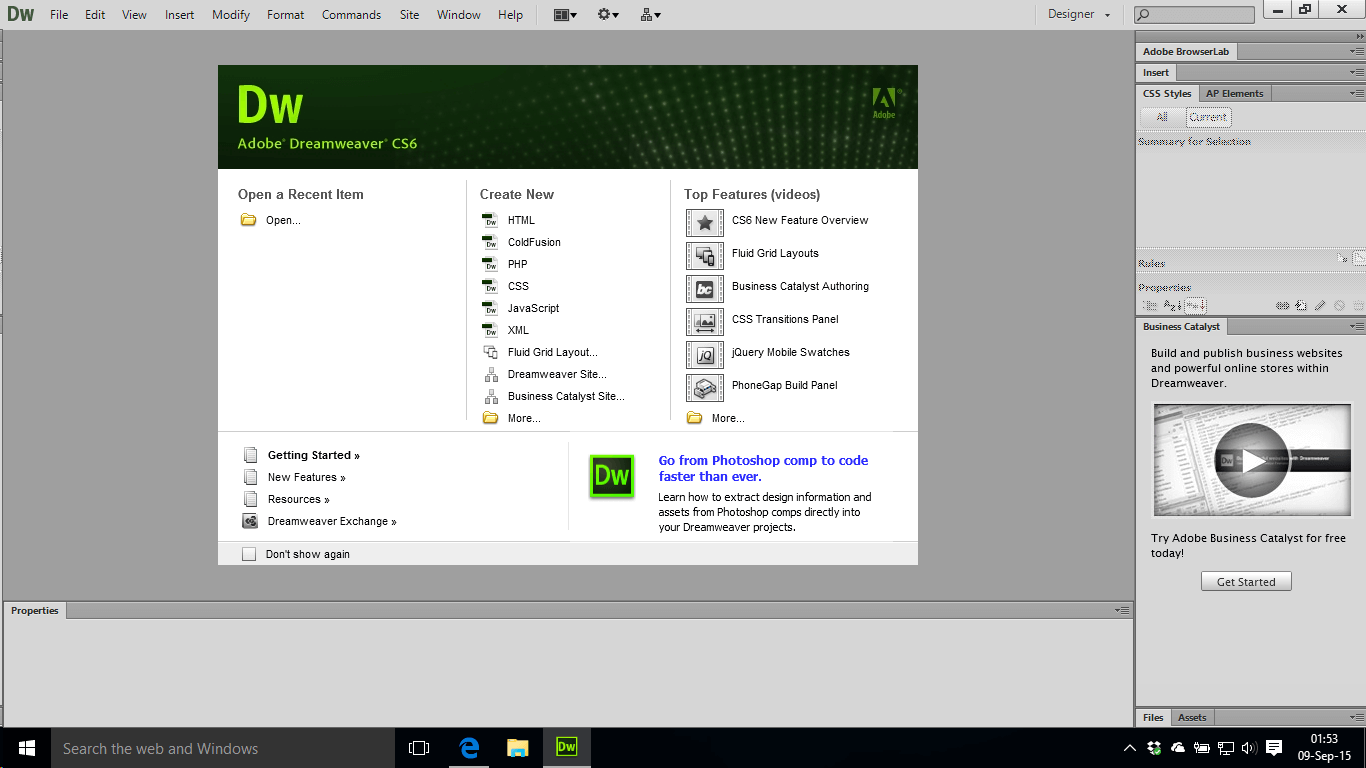
OS: Windows and Mac
Value: One-time fee of $399 from Amazon.com or subscribe to the Creative Cloud or CC (version) with different prices depending on conditions. Check the prices at http://www.adobe.com/products/dreamweaver/buying-guide.html).
Dreamweaver is preferred by most developers and designers as editor program. The CC platform offers more functions and options for synchronization with cloud accounts. In other words, you can log in and access files remotely worldwide.
Pros:
- Loaded with functions and features
- Easy shifting from code to design view
- Superior FTP support
- jQuery mobile support
- Support for CSS 3 and HTML 5
- Live viewing for developers to check compatibility with different browsers and guarantee consistency in design across multiple browsers
- Interface can be customized depending on your requirements
- Properties Bar and highlighted codes
- Code suggestions (auto-complete)
- Supported by PhoneGap which means you can convert HTML codes into Android, iOS and Blackberry application
Cons:
- Adobe Dreamweaver CS6 is expensive compared to similar programs
- The complicated interface may prove difficult for novices
- Only a few people (mostly web designers) use this app
Conclusion:
Dreamweaver is loaded with features among all editors’ apps particularly for intermediate to advanced users. You will be able to work on websites that would be too complex to work on otherwise. However, if you’re working on simple websites or are a beginner in the industry, it might be a good idea to try the other free HTML editors itemized below before putting in a lot of money for Dreamweaver CS6. Another option is to subscribe to the Dreamweaver CC for one month to try your hand at it before actually buying the software.
BlueGriffon
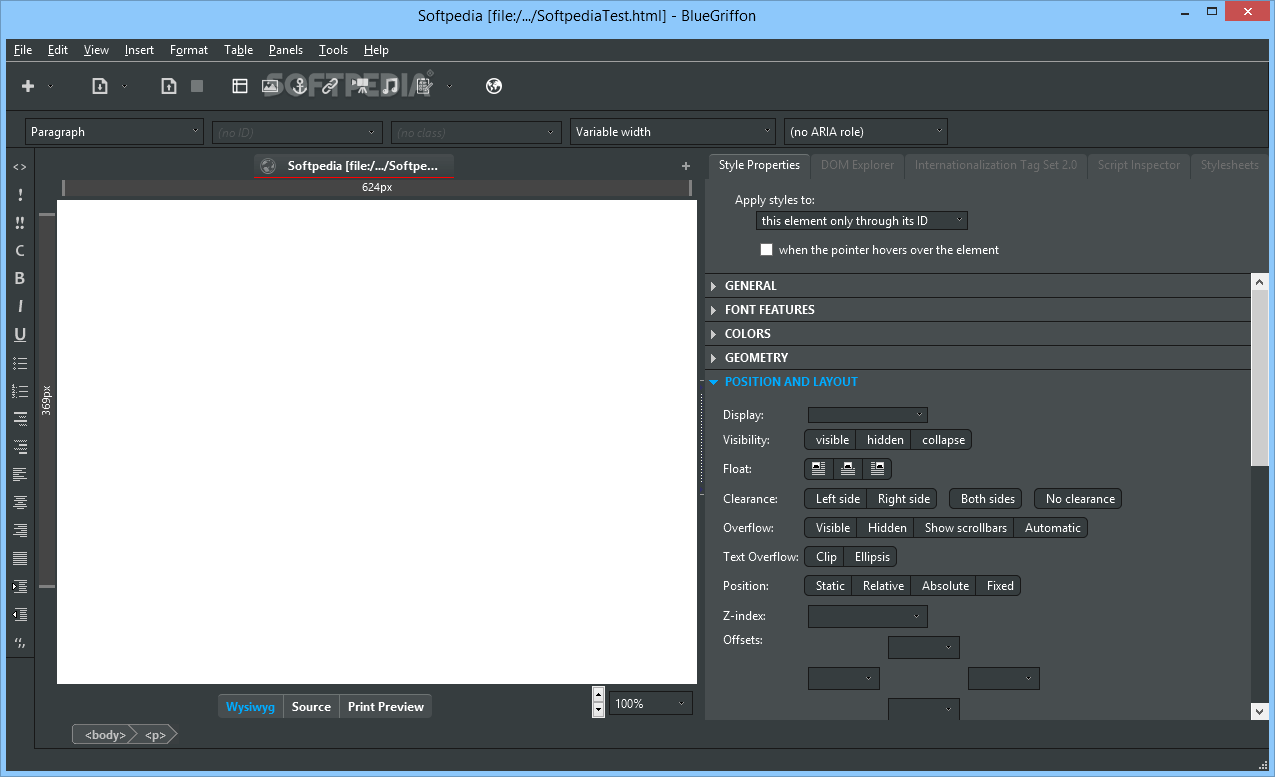
OS: Mac, Windows, and Linux
Value: Free
BlueGriffon (WYSIWYG) supports Cascading Style Sheets (CSS3) and HTML5 based on the Firefox (Gecko) rendering engine.
Pros:
- Free download
- HTML know-how is not needed
- Free and paid add-ons for easy download
- Won multiple awards such as Recommended Web Tool 2013 (WebHostingSearch.com), Open World Forum 2010 Innovation Award, and Top 100 Netexplorateur (2011)
Cons:
- Absence of exceptional features
- Cannot upload to FTP unlike with Dreamweaver
Conclusion:
It is a capable editor with features appropriate for beginners and fairly experienced users.
HTML5 Editor
OS: Mac, Windows, and Linux
Value: The open-source platform is provided free (non-profit basis) from Silex Labs. Installation guides can be found on the Silex Labs website.
Pros:
- Free download
- HTML5 support
Cons:
- Program must be uploaded to your server before installation requiring basic understanding of File Transfer Protocol.
- Editor is based on an online browser so you cannot access files if the Internet is down.
Conclusion:
The editor is perfect for new and intermediate users with good functions. This program’s WYSIWYG component makes it useful for inexperienced users for editing and adding content.
Code Editors (HTML and CSS)
KompoZer
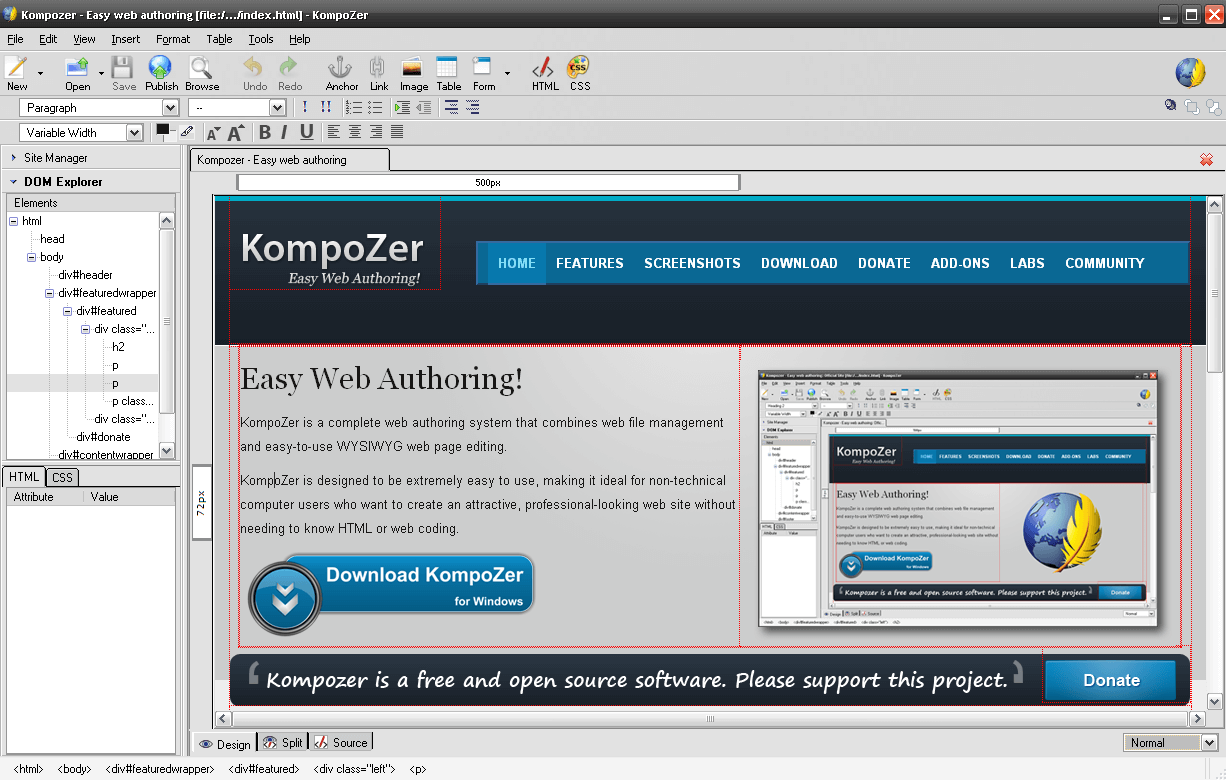
OS: Mac, Windows, and Linux
Value: Free, but donations are requested
Like BlueGriffon. It is based on the web browser engine of Firefox (Gecko).
Pros:
- Free download
- Simply click a button to shift from WYSIWYG to Source modes. It is helpful if you need to copy and paste codes directly.
- HTML know-how is not needed
- Upload files to the web server right away with built-in FTP manager
- Customised toolbar with most common features
- Has a Tabs feature which is useful so you can have one window open and still be able to edit multiple files by simply clicking on the tab for each file
Cons:
- App is becoming obsolete since the latest version (7.10) came out 10 years ago.
Conclusion:
KompoZer is user-friendly with a number of advanced features like FTP management of the website using the program rather than saving files to the PC. It is an ideal app for novices and experienced users. No technical knowledge is necessary.
Rendera
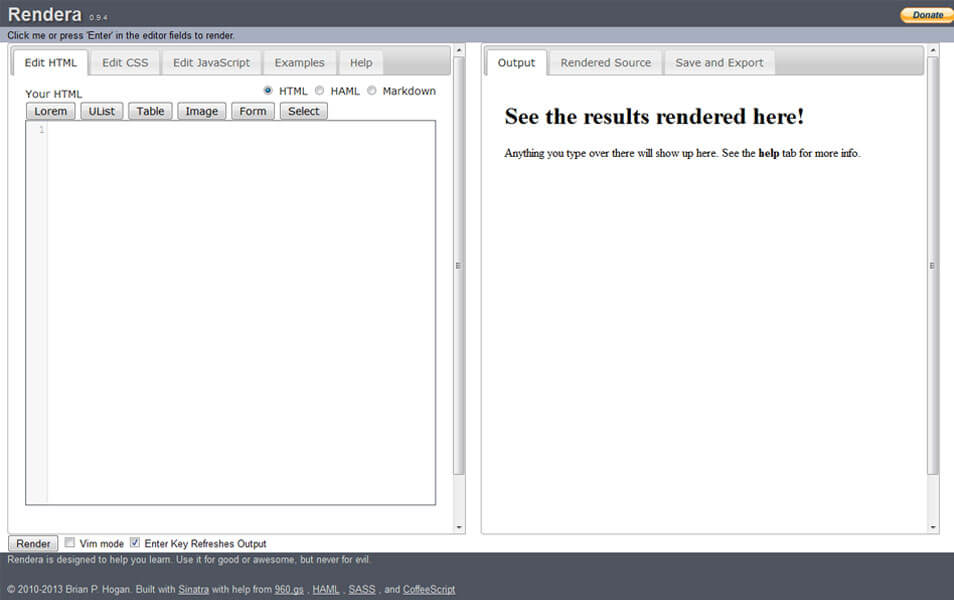
OS: Compatible with all operating systems provided browsers also match.
Value: It is a free of charge browser-based editor (HTML5 and CSS3) that allows users to enter code executed in real-time.
Pros:
- Free
- Straightforward interface specifically for new users
- Code is saved and exported to the PC for editing
- There are a variety of examples available for HTML, CSS, JavaScript, jQuery and CoffeeScript, etc., all of which can be edited
- Can be used on all operating systems with an Internet browser
Cons:
- Limited functions
- Not appropriate for commercial use
- You can easily lose Internet connection and the document as well and wait for reconnection before resuming editing tasks.
Conclusion:
Templates and pointers are available for beginners on web pages and CSS documents but it is too fundamental for professionals.
Aloha Editor
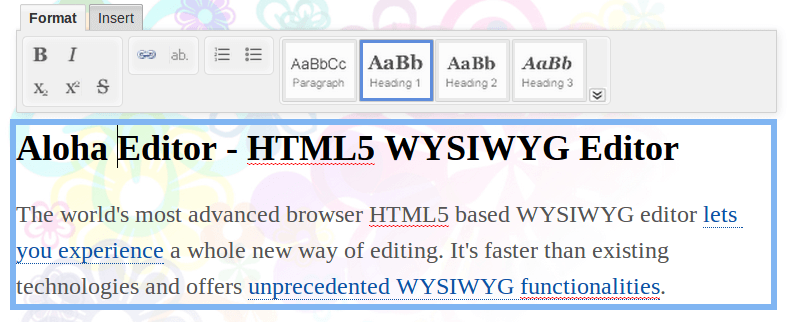
OS: It supports HTML4 and higher versions. This app claims to be the most advanced HTML5 (WYSIWYG) editor worldwide. Aloha has a toolbar working at the front-end so users can edit text ‘in-line’ without logging in to the admin panel. You cannot run Aloha from the desktop but through the browser first unlike other HTML editors.
Pros:
- Free use
- Supports HTML5 but usage does not require knowledge of the HTML system.
- Integrates with CMS like Drupal and WordPress
- Functions in real-time as you see what you type
- You can make tables without any HTML formatting since the interface performs this task for you.
- You are not required to log in to the back-end admin panel
Cons:
- It has no sophisticated features that you might expect from other editors.
Conclusions:
Since it’s free to use, you might as well try to see how it works and if it’s right for you. Whilst it is a free browser-based editor, it has quite a few useful features and functions, one of which is its ability to integrate with CMS such as WordPress. If you are a WordPress user, you can simply download it as a free plugin from the admin panel and follow the simple installation process.
TextMate
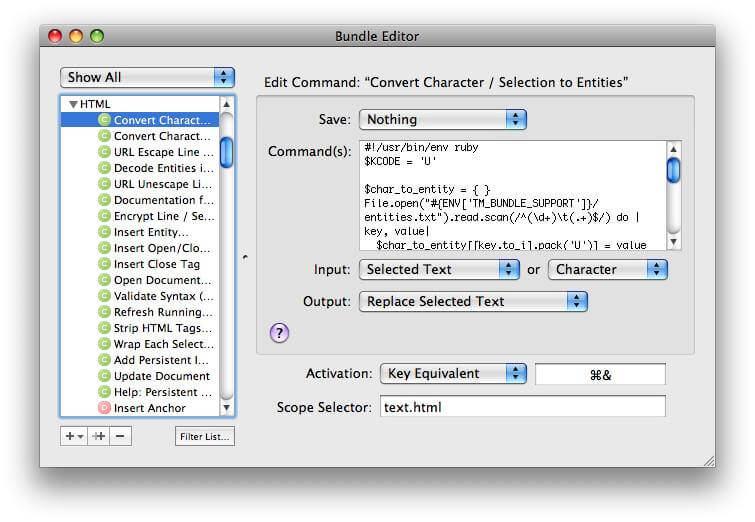
OS: Mac
(insert screenshot here)
Value: One version is free whilst the paid version costs €46.02 for one license. The design is more like a Notepad than an editor. Encoders will find the interface easy to navigate. Coding is possible without buttons on both sides of the editing screen.
Pros:
- It can edit the HTML code with menu button for selection of various languages like Python, CSS, Ruby, and JavaScript. TextMate offers code validation for majority of them.
- Complete online manual for users
- Option to consult online forum, Wiki, and IRC channel for problems with the program
- Available plugins to download more features and functions
Cons:
- The full version is not free
- It is available only on Mac
- It is a basic editor
- There is no WYSIWYG mode
Conclusion:
The full version is still cheaper than its counterparts with the capacity to download plugins.
HTML Kit
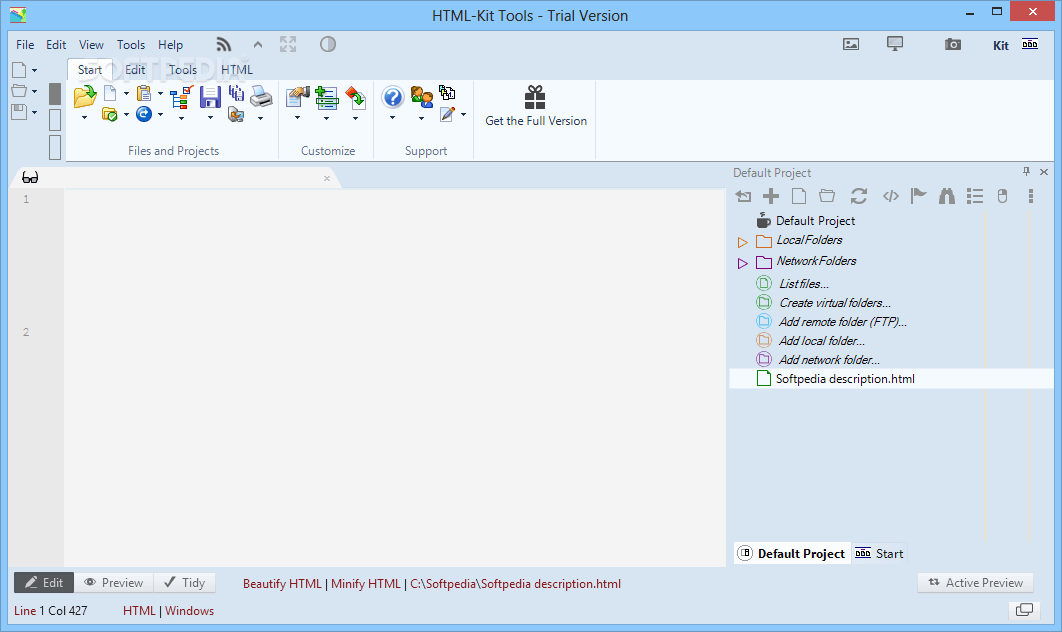
OS: OS: Mac, Windows, and Linux
(insert screenshot here)
Value: You can use the older version for free. The paid version costs $59 but there is a special offer of $39 to $49 for students or those who cannot afford the initial price. More features than other apps give value to users.
Pros:
- Free trial available of the full version
- Download the free program if you want to use the HTML-Kit 292 (older version)
- Available plugins
- Full screen mode to minimise distractions
- Choose from several colour themes
- Excellent web support (chat, email, and forum) with social media accounts (FB, Twitter, and Google+)
- YouTube tutorial sessions
Cons:
- Fee for full version
Conclusion:
This product offers good value for money especially for beginners. Whilst it doesn’t have as many features as other advanced HTML editors, HTML Kit offers good functionality. In addition, it has a great feature on the website which allows users to generate a favicon for their website using a picture from their computer or Twitter account.
General conclusion:
For professionals (developers and designers), the unanimous choice is Adobe Dreamweaver, whilst Aloha Editor is good for CMS and WordPress blogging.
